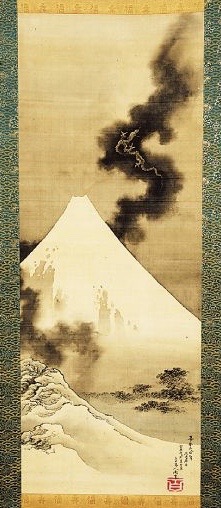Katsushika Hokusai

Katsushika Hokusai was a Japanese artist, ukiyo-e painter and printmaker of the Edo period.
His influences stretched across the globe to his western contemporaries in nineteenth-century Europe with Japonism, which started with a craze for collecting Japanese art, particularly ukiyo-e, of which some of the first samples were to be seen in Paris, when in about 1856, the French artist Félix Bracquemond first came across a copy of the sketchbook Hokusai Manga at the workshop of his printer.
He influenced Art Nouveau, or Jugendstil in Germany, and the larger Impressionism movement, with themes echoing his work appearing in the work of Claude Monet and Pierre-Auguste Renoir.
Many artists collected his woodcuts: Degas, Gauguin, Klimt, Franz Marc, August Macke, Manet, and van Gogh."[29] Hermann Obrist's whiplash motif, or Peitschenhieb, which came to exemplify the new movement, is visibly influenced by Hokusai's work
His influences stretched across the globe to his western contemporaries in nineteenth-century Europe with Japonism, which started with a craze for collecting Japanese art, particularly ukiyo-e, of which some of the first samples were to be seen in Paris, when in about 1856, the French artist Félix Bracquemond first came across a copy of the sketchbook Hokusai Manga at the workshop of his printer.
He influenced Art Nouveau, or Jugendstil in Germany, and the larger Impressionism movement, with themes echoing his work appearing in the work of Claude Monet and Pierre-Auguste Renoir.
Many artists collected his woodcuts: Degas, Gauguin, Klimt, Franz Marc, August Macke, Manet, and van Gogh."[29] Hermann Obrist's whiplash motif, or Peitschenhieb, which came to exemplify the new movement, is visibly influenced by Hokusai's work

The Great Wave off Kanagawa


